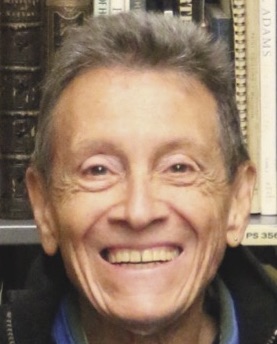 It was mid-September, and I decided to wear my down jacket while working in the John Teti Library, one of the special collections at the former New Hampshire Institute of Art (NHIA), located in beautiful downtown Manchester, New Hampshire.
It was mid-September, and I decided to wear my down jacket while working in the John Teti Library, one of the special collections at the former New Hampshire Institute of Art (NHIA), located in beautiful downtown Manchester, New Hampshire.
As a result of a recently completed merger, NHIA has become the Institute of Art and Design at New England College, and I was there for three weeks (September 16-October 4) on a Teti Photography Fellowship, a residency grant established in honor of its namesake, John Teti, a retired businessman who is also an artist and photographer, maintaining a studio in Sutton, New Hampshire. Over the years Teti acquired an extraordinary library and print collection that he donated to the former NHIA in installments. (That’s on top of donating funds for a digital lab and other practical needs.)
The initial book donation included some 2000 titles, valued in 2007 (when it arrived) at over $1.5 million. In 2011 Teti added another 2,900 books and magazines, including many European publications, valued at nearly $400,000. And in 2017 he added a donation of original prints by leading 20th-century photographers, including Harry Callahan, Paul Caponigro, Imogen Cunningham, Lee Friedlander, André Kertesz, Man Ray, Minor White, and others. (You can find those catalogued here.) Most recently he donated a number of books and prints relating to erotic photography.
•
The rare books and prints that comprise this extraordinary gift reside in a Special Collections room, under lock and key and 24-hour video surveillance. Other volumes, more easily replaceable, are housed on the library’s open shelves. All are accessible (the rare items by appointment) not only to outside researchers like me but to the school’s students and teachers, making this a teaching collection on steroids, as it were, and an unparalleled resource for serious scholars of the medium.
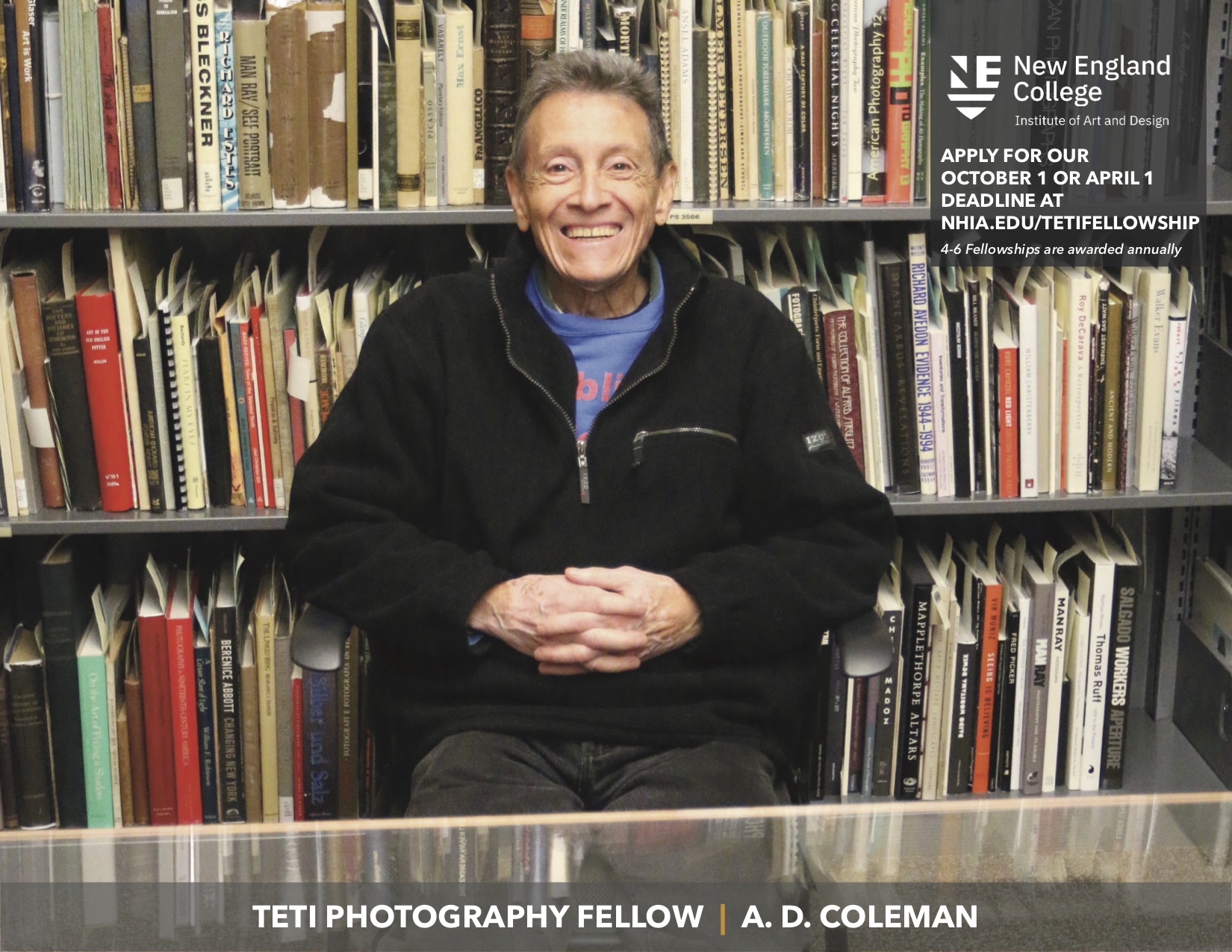
ADC in Teti Collection, IAD-NEC, September 2019
Here’s the institution’s description of the fellowship and book collection:
The Teti Fellows program awards four to six fellowships annually to scholars, artists, writers and educators wishing to travel to our campus in Manchester, New Hampshire to make use of the John Teti Rare Photography Book Collection housed in the college’s Teti Library.
The John Teti Rare Photography Book Collection is one of the finest collections of photographic resources in the United States. The Collection, established in 2007 through a generous donation by Mr. John Teti, contains over 2,000 rare books, periodicals, prints and documents illustrating the history of photography, including Edward Steichen’s personal copies of Alfred Stieglitz’s “Camera Work.”
The Teti Fellowship itself draws not on an endowment but on a cash donation made by Teti. Announcement of the fellowship’s inception came in fall 2017. I’m the fourth recipient to date. Since it’s unclear whether the fellowship will continue after the initial funding gets used, I encourage my colleagues to apply soon if they have projects that would benefit from such a stint. The fellowship stipend suffices to cover travel and living expenses for the duration of one’s stay, which can range from 1-4 weeks.
The wood-paneled room housing the collection in this former bank building has temperature and humidity controls, which keep it between 60-68 degrees Fahrenheit and 35%-50% relative humidity. At that moment it was at 67F and 49% relative humidity, so I had on the jacket and a knit cap, wondering if I needed gloves. (I’m thin-blooded, and chill easily.) Meanwhile, just outside it was a balmy New England Indian summer, breezy but mild, with the leaves just starting to turn.
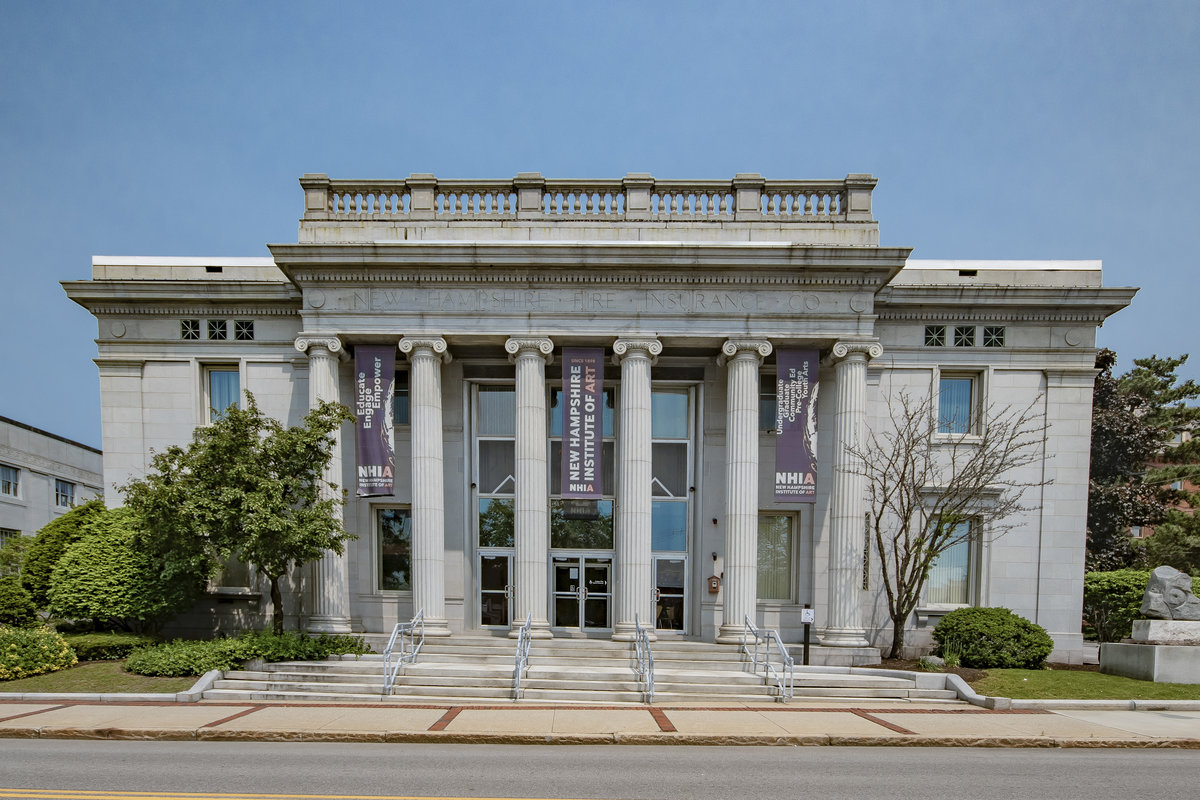
Fuller Hall (exterior), Institute of Art and Design at New England College, Manchester, NH
•
Though I had no hand in its making, I felt an immediate personal connection to this remarkable repository. Some of that resulted simply from finding myself in a room full of books, one of my favorite environments in the whole world. Some of it came from the immediately discernible presence therein of books I have known, read, paged through, referred to, loved (or not, in some cases), going back through the past five decades. Certainly the inclusion therein of several dozen books that contain my own work — all my collections of essays, plus numerous monographs to which I have contributed helped. (With the approval of IAD librarian Martha Sawyer, who knows the collection better than anyone save Teti himself, I pulled and signed all of those before I left.)
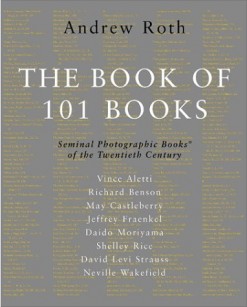
Andrew Roth, ed., The Book of 101 Books (2001), cover
Beyond those volumes, I could see dozens of books that I had reviewed over the years in one periodical or another, including many from the late 1960s and early 1970s that I suspect either Teti or their original purchaser acquired as a result of reading my columns in the Village Voice and New York Times. I was the only critic regularly reviewing photo books (especially self-published/small-press photo books) at the time, so — unless one knew or encountered the photographer involved — one would most likely have found out about many of these titles from my reviews.
Beyond the familiar there lay hundreds of volumes with which I had no previous direct hands-on experience — sometimes the eyes-on experience of seeing a copy in a museum vitrine at a show, most often just the reproduction of a cover or a page layout in someone else’s monograph. To give just a hint of the collection’s scope, of the key photobooks listed in The Book of 101 Books: Seminal Photographic Books of the Twentieth Century, edited by Andrew Roth (New York: PPP Editions / Roth Horowitz, 2001), the Teti Collection has 50. That alone makes it a destination resource for researchers.
•
In my application for the fellowship I indicated that my primary purpose involved pursuing the Capa D-Day project. Though the collection did not have much material relevant to that ongoing investigation it did have some. I’ll write more about that, and about what I achieved toward that end, in a subsequent post in that series.
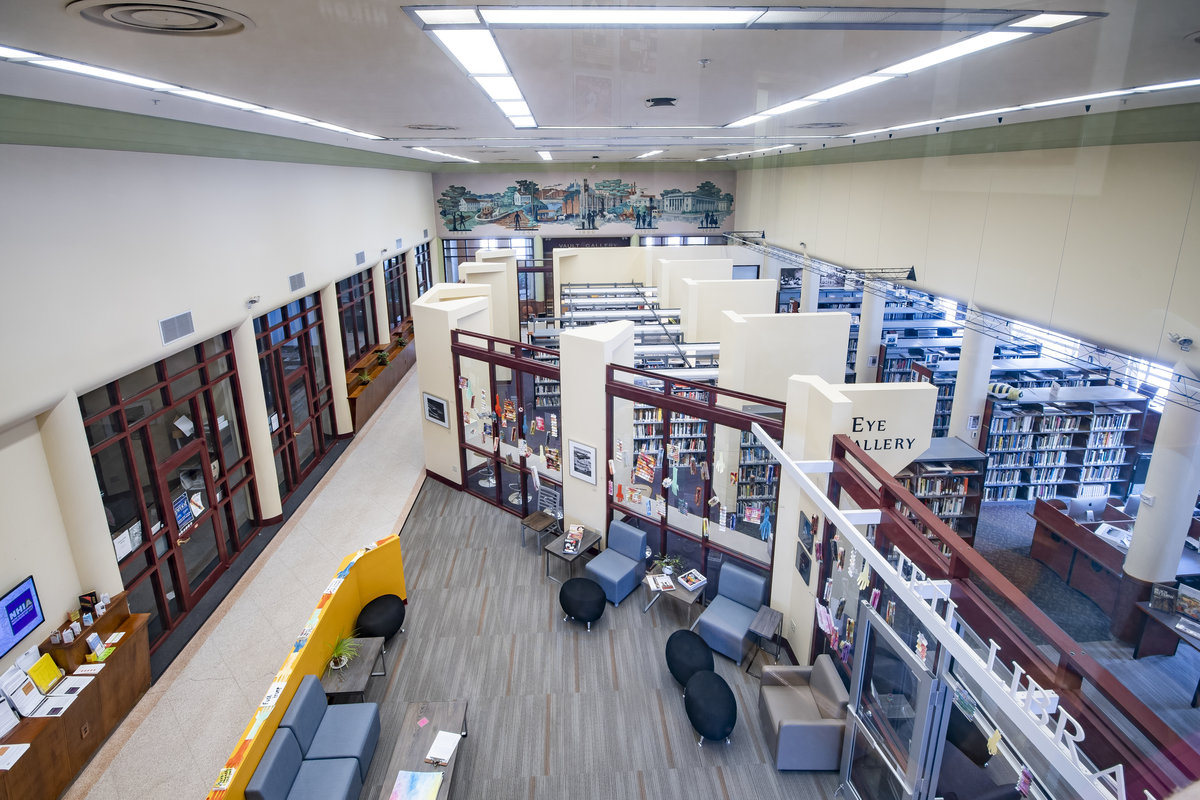
Fuller Hall Library (interior view), Institute of Art & Design at New England College
In between efforts on that front, as an inveterate bookworm I nosed around, feeling a bit like Thomas Wolfe in Harvard’s Widener Library: “I wander through the stacks of that great library like some damned soul, never at rest — ever leaping ahead from the pages I read to thoughts of those I want to read.” If I no longer have the fervor (or stamina) of his autobiographical character Eugene Gant in Of Time and the River — impelled “to prowl the stacks of an enormous library at night, to tear the books out of a thousand shelves, to read in them with the mad hunger of the youth of man” — I do remember it, wishing not for its return but simply for a library like this one sited a mere half-hour away from where I live and work, so I could visit it easily whenever I wished.
In this and the next several posts I will report on some of what I found there and accomplished during my stay.
•
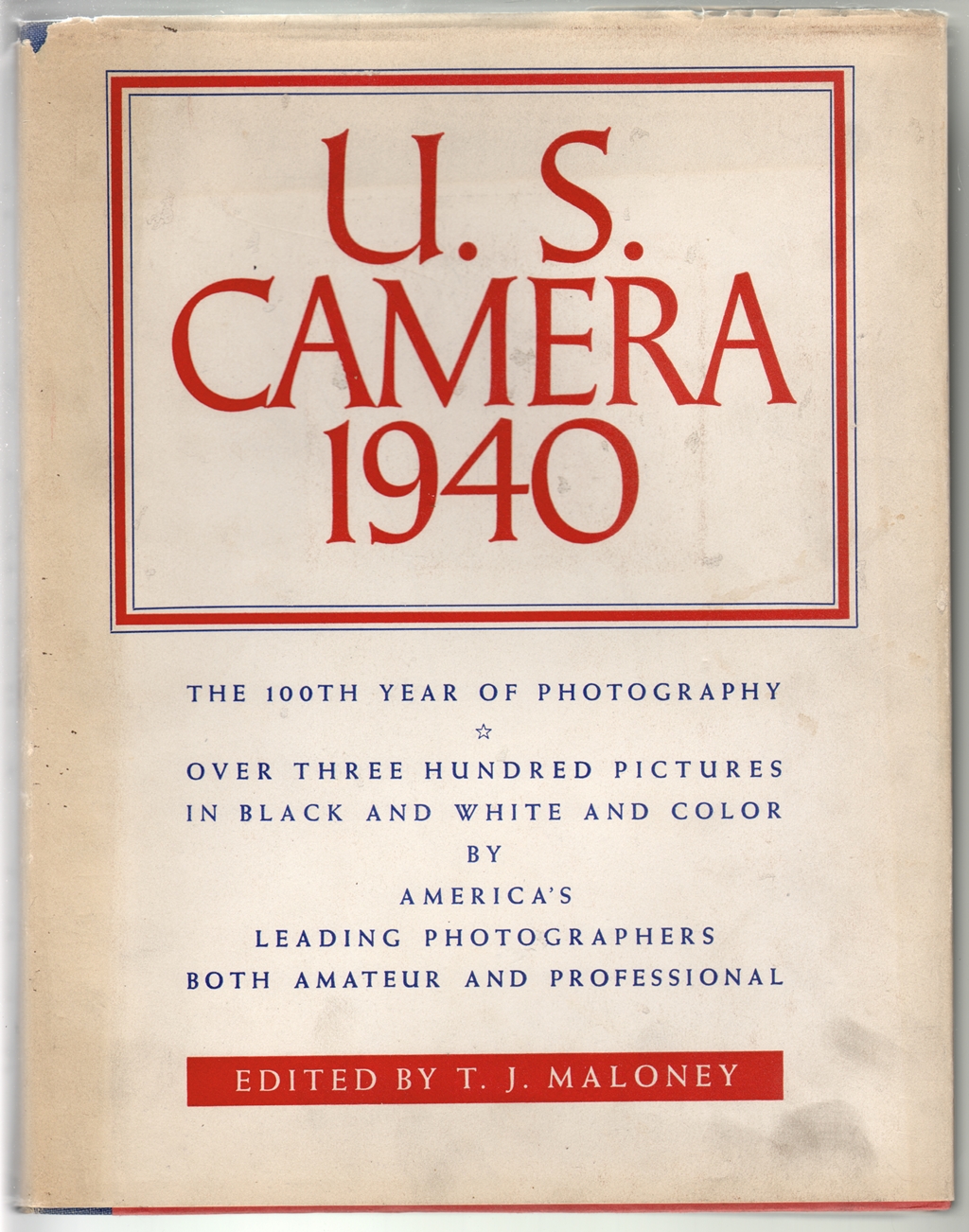
U.S. Camera, 1940, cover
In any physical library, serendipity rules. You never know what you’ll find just poking around, pulling things off the shelf at random.
For example, in a copy of the spiral-bound U. S. Camera 1940, edited by T. J. Maloney (New York, Random House, 1940), there’s a celebration of “Photography in its One Hundredth Year.” This includes “One Hundred Years of the American Standard of Photography” (pp. 11-18), by the under-recognized art critic Elizabeth McCausland, who wrote periodically and intelligently about photography (perhaps influenced in that regard by her life partner Berenice Abbott).
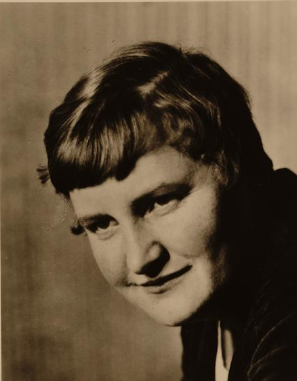
Elizabeth McCausland, ca. 1935. Photographer unknown.
This comes across as a work of cultural history presented in the form of a chronology that merges technological, cultural, and creative trends over the previous century. It includes this prophecy, specifically pertinent to the location in which I discovered it:
“Photographic books with text, begun in 1932 with Charles Cross’ A Picture of America, continued in 1937 by the Bourke-White and Caldwell You Have Seen Their Faces and in 1938 by the MacLeish Land of the Free, take an upswing in North of the Danube, the Abbott-McCausland Changing New York, the Reisenberg-Alland Portrait of New York, and others. A trend gets under way.
“And photography has conquered America. …”
Unquestionably, “photographic books with text” go back much further than 1932 — arguably, at least, to William Henry Fox Talbot’s The Pencil of Nature (1844-46), inarguably to How the Other Half Lives by Jacob Riis (1890). Nonetheless, here McCausland stands among the first, if not as the first, to identify “the photographic book” as a phenomenon unique to the medium and notable in its evolution. Surely an appropriate discovery at the outset of my stay in Manchester.
•
This post sponsored by a donation from Carlyle T.
•
Special offer: If you want me to either continue pursuing a particular subject or give you a break and (for one post) write on a topic — my choice — other than the current main story, make a donation of $50 via the PayPal widget below, indicating your preference in a note accompanying your donation. I’ll credit you as that new post’s sponsor, and link to a website of your choosing.
 Include a note with your snail-mail address (or email it to me separately) and I’ll include three (3!) copies of The Silent Strength of Liu Xia, the catalog of the 2012-13 touring exhibition of photos by the dissident Chinese photographer, artist, and poet, who, after eight years of extralegal house arrest in Beijing, finally got released and expatriated to Germany in 2018. The only publication of her photographic work, it includes all 26 images in the exhibition, plus another 14 from the same series, along with essays by Guy Sorman, Andrew Nathan, and Cui Weiping, professor at the Beijing Film Academy. Keep one for yourself, share the others with friends.
Include a note with your snail-mail address (or email it to me separately) and I’ll include three (3!) copies of The Silent Strength of Liu Xia, the catalog of the 2012-13 touring exhibition of photos by the dissident Chinese photographer, artist, and poet, who, after eight years of extralegal house arrest in Beijing, finally got released and expatriated to Germany in 2018. The only publication of her photographic work, it includes all 26 images in the exhibition, plus another 14 from the same series, along with essays by Guy Sorman, Andrew Nathan, and Cui Weiping, professor at the Beijing Film Academy. Keep one for yourself, share the others with friends.






This is an excellent piece. Am looking forward to its continuation. Is there some way that we old old timers might add some books to the collection that are currently part of own libraries ?
Thanks
ADW
As I indicate in this first post, and will elaborate in a subsequent one, this collection is in a state of transition, so I think proposing any addition to it would prove problematic until they get its place in the new institutional infrastructure (and its eventual physical location) sorted out.
Not clear whether you’re talking about adding a few volumes or many. You can always query any library where you’d like to see your books, if you’re willing to donate.
You might give some thought to this project, as described by Robert von Sternberg in a two-part Guest Post at this blog, as a possible model for a collective donation of books (and perhaps other materials) to selected institutions.